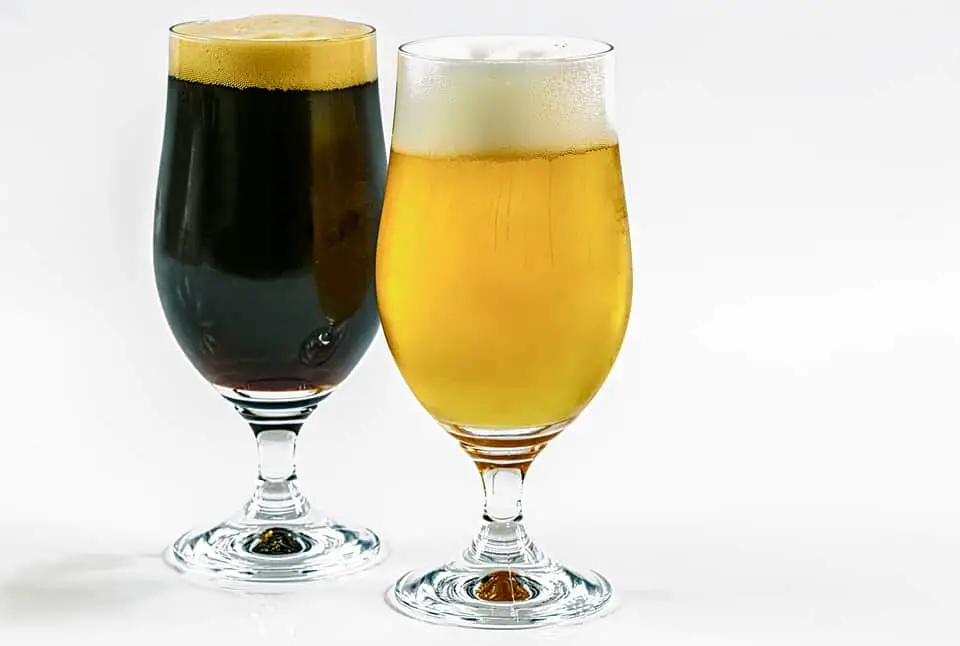Table of Contents
*This post may contain affiliate links. As an Amazon Associate we earn from qualifying purchases.
There’s nothing better than enjoying a glass of ice-cold but with so many styles of beers out there, choosing the best one to enjoy can be a tough undertaking.
When it comes to the subject of beer, there are no two words that get thrown around more than “lager” and “ale.” This is hardly surprising especially when all beers belong to at least one of these two types.
So lager vs ale, which is the better beer? What exactly is the difference between the two?
Well, that’s what we are hoping to answer in today’s post. You know we had to do it, as it is one of the epic, never-ending battles for bar and gastropub supremacy.
Let’s get to the facts!
[amazon box=”B00LK55Y6O,B01NCEPAFH,B008IXZTOI,B00OMLXJ38″ template=”table”]
LAGER VS ALE: DEFINING EACH TYPE
First, let’s define both lager and ale before we go into the differences.
According to Wikipedia, Lageris a type of beer that’s conditioned at low temps. The term may also be used to describe the style of cold-conditioning process that the beer is subjected to.
There are dozens of beer styles which fit in the lager type, broadly categorized by the depth of color, being (from lightest to darkest) pale, golden, amber, or dark. Pale lager is the most widely consumed and commercially available style of beer.
On the other hand, Aleis a type of beer that utilizes a warm fermentation method which results in a weet, full-bodied and fruity taste. In the past, Ale is used as a term to describe a drink that’s brewed without hops.
As with most beers, ale typically has a bittering agent to balance the malt and act as a preservative. Ale was originally bittered with gruit, a mixture of herbs or spices boiled in the wort before fermentation. Later, hops replaced gruit as the bittering agent.
The Yeast Difference
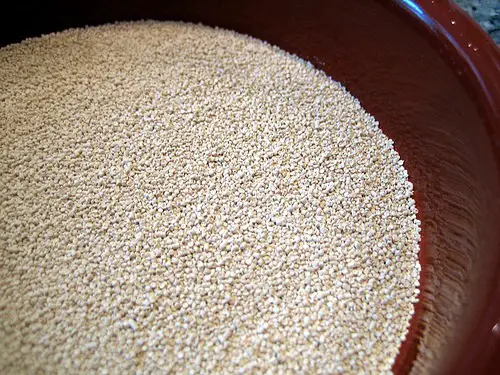
Ask many beer aficionados about the differences between lager vs ale and you’ll probably get a straightforward answer: yeast.
At face value, this statement is true but it’s actually a bit more complex than that. It’s general knowledge among beer enthusiasts that lager uses a bottom-fermenting yeast while ale uses a top-fermenting yeast. Actually, both of these types disperse throughout the entire fermentation vessel during the brewing process. At some point of the fermentation process, the yeast will become more apparent either on top or bottom.
So what’s the difference between these two yeast types?
Lager
– it is fermented using Saccharomyces uvarum. This yeast isn’t so much bottom fermenting but it just that it doesn’t rise to the top as much as an ale yeast before settling to the bottom as the fermentation wraps up. Since the yeast doesn’t show up at the top, many assumed that it’s a bottom fermenting type instead. It’s also a much more fragile yeast that requires more specific conditions to thrive. This also means that it can create a wildly different result when compared to an ale yeast. This yeast also attenuates sugar in a slower manner which results to a longer brewing process.
ALE
– this is fermented using a yeast called Saccharomyces cerevisia which is a very common yeast that’s also used in many other applications like making bread and wine. It is known to be a top-fermenting yeast since it will first rise up to the top and then sink down to the bottom of the vessel as the end of the fermentation approaches. This makes the yeast easier to harvest without disturbing the process. This is a fast action yeast which allows people to brew ale in as little as a week.
The Alcohol Content

Our next area of interest goes to the alcohol content. Regardless of the type of beer, the yeast will have a direct influence on the overall alcohol content.
Since yeast that’s found in ale is much more resistant in higher-alcohol environments, it can survive higher levels of alcohol. So in most cases, ales will have a higher alcohol content when compared to lagers.
On the other hand, the slower lager yeast will not survive at higher alcohol content and generates less alcohol. So it goes without saying that lagers will generally have a lower alcohol content in comparison to ales.
The Temperature of the Fermentation Process
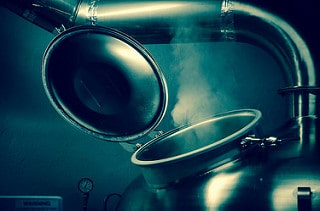
Another area of distinction between a lager and an ale is the temperature of the fermentation process. Most yeasts will die off when the temperature reaches 104°F while they will sporulate and stop acting at temperatures below 58°F.
Top-brewing ales are generally brewed at temperatures of 60-80°F with some rare types that go as high as 95-100°F. So because that this, ales are usually brewed in these ranges to quickly usher the fermentation cycle due to the higher chemical activity at higher temps. However, this fast fermentation process results in a cloudier, hardier beer that many people don’t like.
On the flip side, lagers remain active at much lower temperatures, thanks to its cold-hardiness. This is why countries with harsh winters like Germany and Central Europe prefer this type of yeast – especially in the past when no brewing is allowed over the summer. The low temps also mean slower fermentation process but allow for a clearer brew.
Cold Storage Step
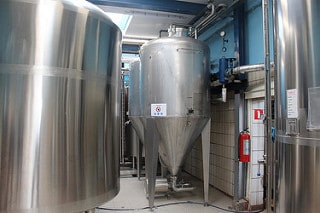
Another notable difference between these two types is that lagers go through an additional step that ales do not. The process is referred to as cold conditioning and it is for developing clarity. This is hardly surprising if you know that the term it came from the German word lagern which means storage.
The addition of the cold storage step provides lager with a better quality and finer flavor. The process also enabled more of the yeast, hops, and protein to settle out of the lager, reducing the chill haze and significantly improving clarity.
Hops
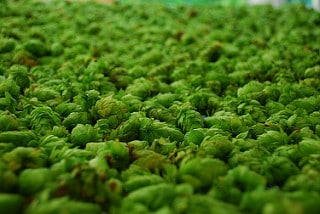
Almost every type of beer will have hops. However, the quantity of hops tends to differ between a lager vs ale.
Due to the lager’s cold storage step, the hops’ finer flavors come out which results in a more delicate flavor without sacrificing the good things that the hops add to a finished product.
In comparison, the hops content in ales is much higher. This is because hops protect the beer as it goes through the fermentation process at higher temperatures. However, due to the faster and warmer brewing process, it also means that the ale ends up with more bitterness.
The Ingredients

In general, most beers tend to have the same ingredients which include water, grain, yeast and hops.
Lagers remained to be bound to these ingredients. There have been some modifications to the grains used in American breweries but as a whole, the ingredients for brewing lagers have remained largely the same. The process has only been made easier, thanks to modern refrigeration methods.
On the other hand, ales were not developed with any sorts of constraints. This enabled many breweries to use various styles depending on the regions. So we see ales with various ranges from stouts to IPAs, with many different sub-styles and experimental batches in between.
Over time, many different ingredients are now f into beers like a wide range of grains and many different fruits. This paved the way for the creation of many different types of beers that are only limited by the brewer’s imagination.
SO LAGER VS ALE, WHICH IS BETTER?

So to summarize:
- Lagers – they tend to have a clear and lighter appearance. Due to the slower fermentation and cold treatment, they have higher sugar content, a smoother flavor, and lower alcohol content. Many of its qualities are impacted by the yeast and brewing procedures.
- Ales – they feature a darker and cloudier appearance. They go through a more thorough fermentation process and have a higher quantity of hops. The higher hops content also means that they have higher alcohol rating and characterized by stronger and more robust bitter tones.
So which one is better? Well, I must say that they both have qualities that make them “better” to a beer drinker. At the end of the day, drinking beer is mostly for enjoyment purposes. Since taste is something that is so subjective, debating which type is better is definitely a discussion for the ages.
So which type of beer do you prefer, lagers or ales? Why do you prefer one over the other? We’d love to have a discussion going so feel free to drop your comments below!

